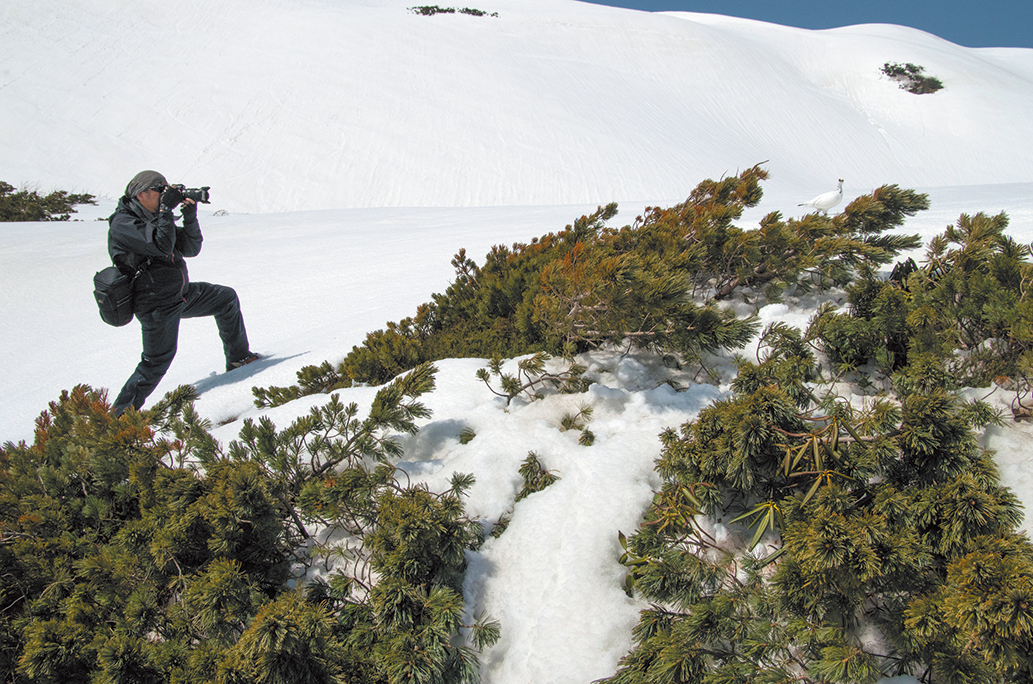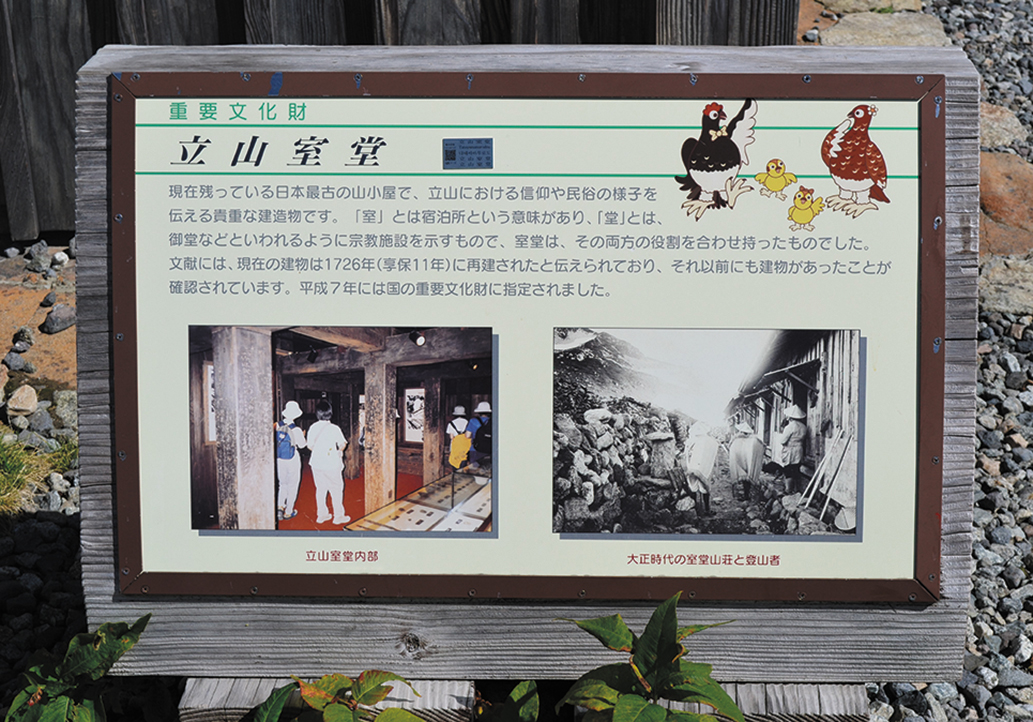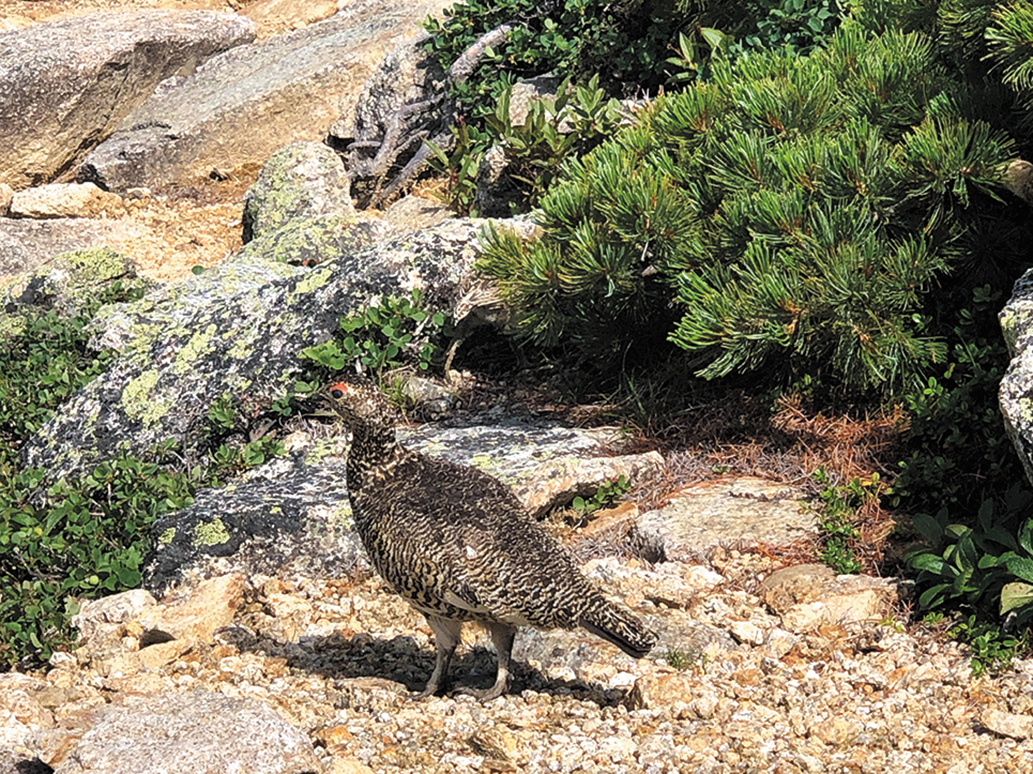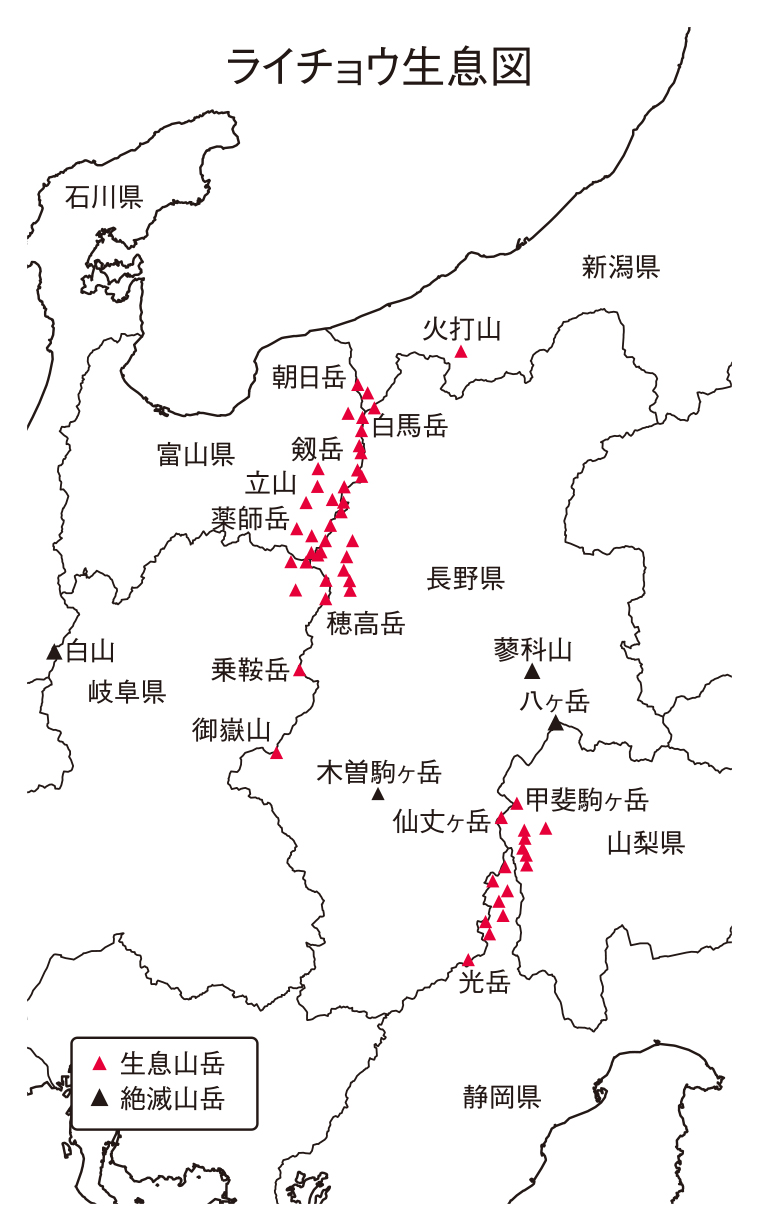【CONTENTS】What kind of animal is a Rock Ptarmigan?

【 Rock Ptarmigan trivia 】
①Why don’t they fear people?
Overseas, grouse are hunted as game and therefore run as soon as they see people. The Japanese rock ptarmigan, which does not fear people, is a treasured bird reflecting the way in which Japanese culture reveres the high mountains where they reside.
②The southernmost in the world?
The rock ptarmigan came to Japan from the continent in the Ice Age. At that time, sea levels were low, the continents were practically continuous, and what is now the Chubu, or central mountainous region, was covered in ice. When the ice started melting in the Paleolithic era and created an ocean, the rock ptarmigan could no longer return to the continent and was left behind in the area. These were the Japanese rock ptarmigan’s ancestors. The Japanese rock ptarmigan (zooligical name: Lagopus muta) is now the southernmost population in the world.
③Can Rock Ptarmigan fly?
Ordinarily, the rock ptarmigan walks, but it can also fly. It is thought to be able to fly distances of more than 30km, and one female flew the numerous tens of kilometers from the Northern Alps to the areas of extinction on Mt. Hakusan and the Central Alps in 2009 and 2018 respectively.
④Raichou literally means “thunder bird” in Japanese. Why thunder?
One theory says that the name comes from the fact rock ptarmigan are said to often come out on bad weather days to protect themselves from predators.However, the English name is not “Thunder bird”but rather rock ptarmigan.
⑤Do Rock Ptarmigan molt?
A rock ptarmigan’s feathers molt three times a year.In winter both male and females turn completely white. In spring, males turn black and females’feathers become a spotted brown pattern. In autumn, both males and females turn grey. However, the bird’s belly and wing feathers are white yearround.
⑥Do Rock Ptarmigan leave the alpine region in winter?
Food cannot be found in the alpine region when it’s covered with snow, so the rock ptarmigan descend further down the mountain below the tree line.so rock ptarmigan descend further down the mountain into the tree line. They spend the winter in groups eating Erman’s birch and montane alder buds as their staple food.
⑦Do Rock Ptarmigan dive into the snow?
Rock ptarmigan dive into the snow to survive the cold and withstand snowstorms. Looking at the droppings left behind in locations where they once burrowed indicates they were there at one time.
⑧Do Rock Ptarmigan have feathers down to their talons?
Rock ptarmigan live in a harsh natural environment, and as such, from the time they are born they have thick legs with feathers down to their talons. Chicks are able to leave the nest after a day and travel with their parents never returning to the nest of their birth.
⑨Do Rock Ptarmigan chicks eat droppings?
Many alpine plants that grow in this harsh environment contain poisonous elements. In order to digest these plants, the rock ptarmigan has a long appendix and special intestinal bacteria. We have recently discovered that the rock ptarmigan acquires this intestinal bacteria by eating its mother’s droppings soon after it is born.
⑩It can’t live without the creeping pine?
The creeping pine provides a perfect place to hide from predators and the optimal nesting environment. It is not that the rock ptarmigan cannot survive without the creeping pine, but it grows at a low height and spreads in bunches making it the ideal habitat.
【 Risks to the Rock Ptarmigan 】
①Global warming
The rock ptarmigan which remains in the alpine region, or what is known as the “island” above the clouds, is facing the strong possibility of losing its natural habitat to global warming.
②Predators
Foxes, Japanese martens, and other animals whose original habitat is in the lower satoyama regions of a mountain, are invading the higher alpine region and preying upon rock ptarmigan.
③Impact on vegetation
The Japanese deer and wild boars of the satoyama region have increased in numbers and are now invading the alpine zone. The vegetation in this area is now in danger of being consumed entirely.



